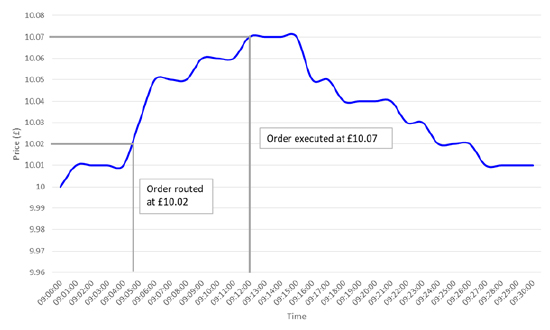


The MiFID II and PRIIPS regulations have been in force for some time now, having come into effect in January 2018. A key part of these rules relates to transparency in costs and charges disclosure, and a particular requirement of this was for asset management firms to disclose transaction costs.
The additional disclosure is designed to help investors make informed choices, but the presentation and comparison of transaction costs continue to cause some confusion even two years on. In this article, we will look at an overview of how these costs are calculated and what they mean for fund investors.
Transaction costs represent the expenses of dealing in the underlying investments in a fund’s portfolio. These costs have, of course, always been present prior to MiFID II and PRIIPs, so they are not ‘hidden charges’ per se, but they do have an effect on an investor’s overall returns and therefore the regulations now mandate that firms should provide a clear disclosure of them to investors so that they can assess the total cost of ownership for products.
Transaction costs for funds are made up of three parts:
In a simple form, the costs disclosed to investors can be calculated as follows:
total transaction costs = explicit costs + implicit costs - anti-dilution benefits
These are the ‘direct’ charges incurred when a fund manager purchases or sells the underlying instruments in their funds. Typically, these are things such as commissions paid to brokers and taxes such as Stamp Duty.
As their name suggests, implicit costs are not directly incurred by the fund manager. Rather, they represent the difference between the price of a security (mid-price) immediately before an order is placed in the market (this is sometimes called the ‘arrival price’), and the price that the trade is actually executed at. This difference is sometimes called ‘slippage’. Due to market movements, implicit costs can be positive or negative.
Large investor subscriptions or redemptions often mean that a fund manager is required to trade in the underlying portfolio, and the costs of this are borne by all investors in the fund rather than just the investors who have caused the trading. To combat this, many funds use an anti-dilution mechanism to dampen the effects of large investor subscriptions and redemptions.
For example, swing pricing, dual pricing or a fixed-dilution levy may be used to cover the costs of dealing from new transactions. The MiFID II and PRIIPS rules allow these anti-dilution benefits to be subtracted from overall transaction costs – but only up to the amount of dilution actually caused by trading. Fund managers using an anti-dilution mechanism may therefore disclose relatively low transaction costs.
To show how transaction costs are calculated, let’s look at a theoretical example. In this example, a fund manager is purchasing 10,000 units of a security from a broker which charges a commission of 3%. The purchase is routed to the broker just before 9.05am and, at that time, the mid-price is £10.02. The price of the security is steadily rising, and when the broker executes the order at 9.12am, the mid-price is £10.07. This is shown in the graph that follows.

The explicit cost is the broker’s commission: 10,000 x £10.07 x 3% = £3,021
The implicit cost is due to the market movements: 10,000 x (£10.07 – £10.02) = £500
So, total transaction costs here are £3,521.
Our scenario showed the price for a purchase where the market was rising. If the price had fallen, then the implicit transaction cost would actually have been negative. This works the opposite way for sales – rising markets result in negative costs and falling markets show positive costs.
The level of transaction costs can be a measure of the execution quality obtained by a fund manager. Used in the right way, they can be a good comparison when analysing the value of different fund choices, which was the intention behind the MiFID II and PRIIPs regulations. Transparency has certainly been increased across the board, with some asset managers choosing to go further than regulations strictly dictate and disclosing transaction costs not just in funds, but also in model portfolios, for example.
However, whilst it would be tempting to think that ‘smaller is better’, when comparing fund transaction costs you have to make sure that you are not comparing apples with oranges.
There are many factors that might affect transaction costs, and in particular the strategy and objectives of the fund should be borne in mind.
Also, although we haven’t gone into the technical details in this article, there are some slightly different calculation methods for implicit costs, such as a different method for new (under three-years-old) funds, which can produce subtly different results.
Disclosure of transaction costs has provided another way for investors to compare funds. Although it can be a fairly complicated area, it pays to do your research beyond the headline numbers – as we have seen, there are some nuances to be aware of when reviewing these costs.
Finally, it is important to note that net performance includes all of the costs discussed in this article and so, as well as looking at the total costs of a fund, analysis of net performance remains a robust way of assessment between different products.
This area of the website is intended for financial advisers and other financial professionals only. If you are a customer of AJ Bell Investcentre, please click ‘Go to the customer area’ below.
We will remember your preference, so you should only be asked to select the appropriate website once per device.